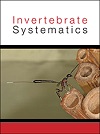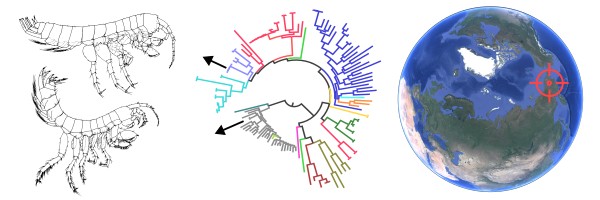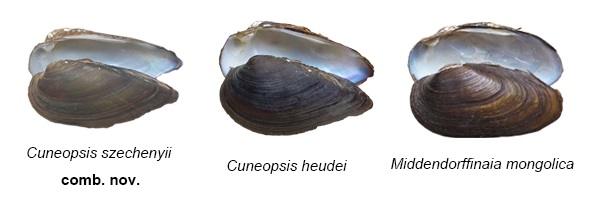In this study we report two new stygomorphic amphipods, Palearcticarellus hyperboreus sp. nov. and Pseudocrangonyx elgygytgynicus sp. nov., from Lake El’gygytgyn in north-eastern Siberia. Molecular phylogenetic analyses confirm their affinity to Crangonyctidae and Pseudocrangonyctidae, respectively, and reveal that speciation preceded Pleistocene glaciations. Although adapted to subterranean life, these species are found exclusively in surface waters, highlighting Lake El’gygytgyn as a high latitude refugium for ancient pre-glacial fauna and expanding the known distribution of stygomorphic amphipods. (Image credit: Denis Copilaş-Ciocianu and Dmitry Sidorov.)

Invertebrate Systematics
Volume 38 Number 12 2024
The maternal mitochondrial genomes of Unio szechenyii, Cuneopsis kiangsiensis, Middendorffinaia mongolica and Pseudocuneopsis wuana are sequenced. The validity of Unio szechenyii, previously considered a synonym of Cuneopsis heudei, is supported by the integration of conchometry, soft-body anatomy and molecular evidence, and a recombination as Cuneopsis szechenyii comb. nov. is proposed. The intrageneric relationships within the genera Cuneopsis and Pseudocuneopsis are elucidated based on the mitochondrial phylogenomics. Middendorffinaia mongolica, a new record for China, is proposed for transfer from the tribe Middendorffinaiini to the tribe Unionini and classification under the subtribe Middendorffinaiina stat. rev. (Image credit: Ruiwen Wu.)
Here, we present the results of the first phylogenetic and biogeographical analysis of the marine littoral Adota on the Pacific coasts of the Northern Hemisphere. The biogeographic patterns were compared with those of different lineages of aleocharine beetles with different microhabitats. Reconstructions of the ancestral areas suggest that the common ancestor of Adota occurred widely along the East Asian coasts. Both dispersal and vicariance were important in shaping the current distribution. (Image credit: Jong-Keun Jung and Kee-Jeong Ahn.)







